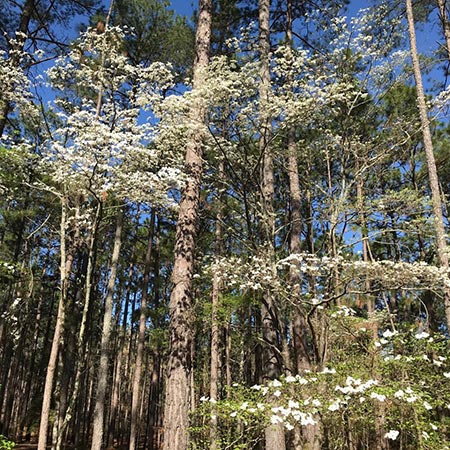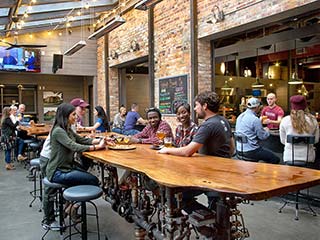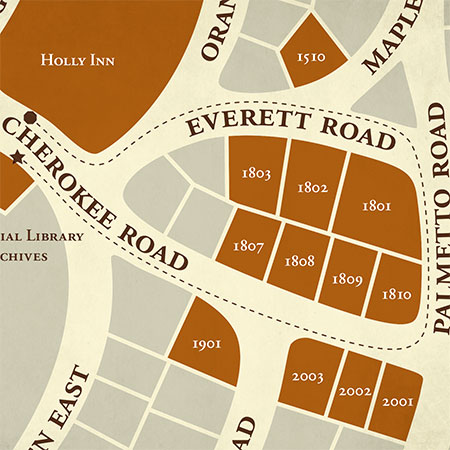The Eve of the Open
The Eve of the Open
By Lee Pace
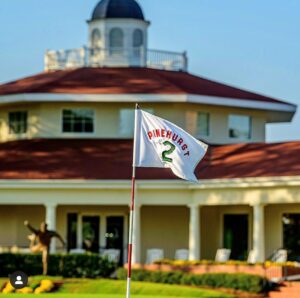 It’s been 10 years since the last U.S. Open at Pinehurst No. 2. What’s different about the golf course and infrastructure in one decade? So much. But then again, so little.
It’s been 10 years since the last U.S. Open at Pinehurst No. 2. What’s different about the golf course and infrastructure in one decade? So much. But then again, so little.
The Deuce does not fit into the Open template of having narrow fairways and suffocating rough following its 2010-11 restoration by Bill Coore & Ben Crenshaw. So course prep leading to the third week of June is pretty much status quo as it is any other June.
Coore saw the course in the spring of 2023.
“It just looked to me like, ‘Go play,’” he says. “The presentation is just perfect. It hasn’t changed in nine years. If anything, it’s better.”
But there are some differences on and around the golf course.
 * The Cradle on hiatus. The immensely popular nine-hole course designed by Gil Hanse in 2017 sits on 10 acres south of the resort clubhouse. That area is used as the practice grounds for the Open, so Pinehurst officials have had to close it to take out some of the wire grass and sand-scaping to allow for efficient pickup of a hundred thousand golf balls during the week. Then they will put The Cradle back together after the Open.
* The Cradle on hiatus. The immensely popular nine-hole course designed by Gil Hanse in 2017 sits on 10 acres south of the resort clubhouse. That area is used as the practice grounds for the Open, so Pinehurst officials have had to close it to take out some of the wire grass and sand-scaping to allow for efficient pickup of a hundred thousand golf balls during the week. Then they will put The Cradle back together after the Open.
* No ladies. June of 2014 was marked by the first-ever back-to-back men’s and women’s national championships on the same venue, and since then the USGA has settled the Women’s Open into a consistent late-May calendar slot. They’ll make an exception in 2029, however, when No. 2 will once again be the site for the men’s and women’s competitions.
* Bermuda greens. The Pinehurst U.S. Opens in 1999, 2005 and 2014 were all played on bent grass putting surfaces. The greens were converted after the 2014 event to Champion Bermuda, and this will be the first time the Open has been played on ultra-dwarf Bermuda. The chief difference? They’ll be a little firmer and thus put even more premium on accurate iron play.
 * More wire grass. Pinehurst maintenance staff added some 50,000 wire grass plants from November through March, and the tufts are positioned randomly along the perimeters of the fairways in the hardpan sand. Combined with pine needles, wildflowers and random “volunteer” vegetation, golfers have no idea what kind of lie and shot they’ll have if they miss the short grass.
* More wire grass. Pinehurst maintenance staff added some 50,000 wire grass plants from November through March, and the tufts are positioned randomly along the perimeters of the fairways in the hardpan sand. Combined with pine needles, wildflowers and random “volunteer” vegetation, golfers have no idea what kind of lie and shot they’ll have if they miss the short grass.
* A narrower 13th hole. John Bodenhamer, the chief course set-up official for the USGA, cropped 12 yards off the left side of the fairway in the landing zone. The shortest par-4 on the course at 381 yards will now offer a target of 28 yards on golfers’ tee shots.
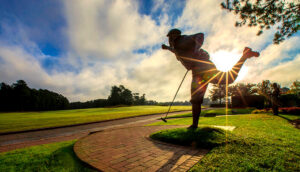 * Where’s Payne? The statue of Payne Stewart in his iconic pose making the winning putt at Pinehurst in 1999 has stood beside the 18th green since November 2001. But with the myriad of infrastructure for the Open, it would have gotten lost behind the grandstands. For Open week, it’s being repositioned at the main entrance.
* Where’s Payne? The statue of Payne Stewart in his iconic pose making the winning putt at Pinehurst in 1999 has stood beside the 18th green since November 2001. But with the myriad of infrastructure for the Open, it would have gotten lost behind the grandstands. For Open week, it’s being repositioned at the main entrance.
* And a more balanced color palette between the Opens of 2005 and 2014.
The course was too green, too lush and “too organized,” in the words of Coore, in 2005, which was why the restoration was taken on in the first place. Part of that project included changing the triple-row irrigation system to a single-row down the middle of each fairway. An inordinate six weeks of hardly any rain leading up to the 2014 Open lent a bit much of a brown and crispy look to the premises.
The winter and spring of 2024 have been ideal in terms of temperature and rainfall. The course will retain its jagged and unkempt look reminiscent of how designer Donald Ross left it upon his death in 1948. But the brown areas not hit by the irrigation row a decade ago will look healthier.
The only tweaks Bodenhamer will make during championship week will be predicated on weather.
“We plan to just let Pinehurst be Pinehurst, as Donald Ross’ masterpiece will surely produce another memorable U.S. Open,” he says.
Chapel Hill based writer Lee Pace has written about golf in the Sandhills since the late 1980s and has authored a dozen books about clubs, courses and the people who’d made it special over more than a century.

